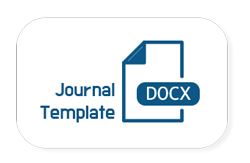Media Literacy of Communication Students in Using Facebook
DOI:
https://doi.org/10.21111/ejoc.v5i1.3947Keywords:
Media Literacy, Facebook, New Media, students, Medan, Literasi Media, Media Baru, Mahasiswa, Medan.Abstract
Media baru merupakan media berbasis internet, dengan menggunakan teknologi. Salah satu yang menjadi perkembangan dari internet adalah media sosial. Saat ini, kita berada di era saturasi media yakni era dimana keberadaan informasi sangat banyak atau kita tengah mengalami kebanjiran informasi karena kehadiran media sosial. Literasi media sebagai suatu kemampuan yang penting agar kesadaran tentang konten dan dampak media serta individu memiliki kontrol dalam menggunakan media sehingga pemilihan konten media dapat sesuai kepentingan. Tujuan penelitian ini untuk mendeskripsikan kemampuan Literasi media pada mahasiswa Ilmu Komunikasi dalam menggunakan media sosial facebook. Keberadaan literasi media sangat dibutuhkan untuk membuat mahasiswa menjadi lebih cerdas lagi di dalam menerima dan membuat informasi di tengah era saturasi media ini. Teori yang digunakan literasi media, framework new media literacy, dan media baru. Metode penelitian ini deskriptif kuantitatif dengan jumlah populasi 1887 dan sampel 95 mahasiswa serta menggunakan teknik purposive sampling. Hasil penelitian menunjukkan bahwa indikator functional consuming facebook dikategorikan sangat mampu, critical consuming facebook dikategorikan mampu, functional prosuming facebook dikategorikan mampu, dan kategori critical prosuming facebook dikategorikan mampu.Abstract  New media is internet-based media, using technology. One of the developments of the internet is social media. At present, we are in the era of media saturation, which is an era where there is so much information or we are experiencing a flood of information due to the presence of social media. Media literacy as an important ability so that awareness about the content and impact of the media and individuals have control in using the media so that the selection of media content can be of interest. The purpose of this study is to describe the ability of media literacy in Communication Science students in using social media Facebook. The existence of media literacy is needed to make students smarter in receiving and making information in this media saturation eraThe theory used media literacy, framework new media literacy, and new media. This research method is descriptive quantitative with total population 1887 and sample 95 students by using purposive sampling technique. The existence of media literacy is needed to make students to any smarter in accept and make the information in the middle of the saturation media era. The results of research indicate that the functional consuming indicator of facebook is categorized very capable, Critical consuming of facebook is categorized capable, functional prosuming of facebook is categorized capable, critical prosuming of facebook is categorized capable.References
Abugaza, A. (2013). Social Media Politika. Tali Wraiting & Publishing House.APJII. (2019). Penetrasi & Profil Perilaku Pengguna Internet Indonesia Tahun 2018. Apjii, 51.Array, A. (2017). Dianggap Hina Nabi Muhammad Mahasiswa Unimed.Barbara, W. (2002). Critical Literacy in a Digital Era. Lawrence Erlbaum Associates.Batoebara, M. U., Suyani, E., & Nuraflah, C. A. (2020). LITERASI MEDIA DALAM MENAGGULANGI BERITA HOAKS ( Studi Pada Siswa SMKN 5 Medan ). Jurnal Warta Edisi 63, 14, 34–41.Fathiyyah, R. N., & Rina, N. (2019). Pengaruh Kredibilitas Youtuber Terhadap Sikap Penonton Pada Channel Youtube Atta Halilintar. 15(2), 98–118. https://doi.org/https://doi.org/10.20884/1.actadiurna.2019.15.2.2135Ginting, R. (2015). Peran Literasi Media Dalam Era Komunitas Asean.Hidayat, F. P. (2018). Literasi Media Terhadap Penggunaan Media Sosial Instagram Pada Mahasiswa di Kota Medan. 1–5.Lin, A. T., Li, J., Deng, F., Lee, L., Lin, T., Li, J., Deng, F., & Lee, L. (2018). International Forum of Educational Technology & Society Understanding New Media Literacy : An Explorative Theoretical Framework Published by : International Forum of Educational Technology & Society Understanding New Media Literacy : An Explorative Theore. 16(4), 160–170.McQuail, D. (2011). Teori Komunikasi Massa. Salemba Humanika.Mondry. (2008). Pemahaman Teori dan Praktik Jurnalistik. Ghalia Indonesia.Nasrullah, R. (2015). Media Sosial: Perspektif Komunikasi, Budaya, dan Sosioteknologi. Remaja Rosdakarya.Nofha Rina, S. N. F. (2020). Literasi Media Digital: Efektivitas Akun Instagram @infobandungraya Terhadap Pemenuhan Kebutuhan Informasi Followers. MEDIALOG: Jurnal Ilmu Komunikasi, 3(1), 13–24. https://doi.org/10.35326/medialog.v3i1.479Nurlinda, A. (2019). Strategi Komunikasi Melalui Akun Media Sosial Instagram @indonesiajuaratrip. 2019(2157), 1–57. https://doi.org/10.11693/hyhz20181000233Oktavianti, R. (2019). KEGIATAN LITERASI MEDIA SOSIAL DI SMP KATOLIK. 2(2), 29–37.Pambudi, J. (2017). Menghina Ibu Negara Lewat Media Sosial, Mahasiswa Ditangkap Tim Gabungan.Puntoadi, D. (2011). Menciptakan penjualan Melalui Media Sosial. Elex Komputindo.Purawinangun, I. A. (2020). Gerakan Literasi Generasi Milenial Melalui Media Sosial. Lingua Rima: Jurnal Pendidikan Program Studi Dan Sastra Indonesia, 9(1), 67–75.Share, J. (2002). Media literacy is elementary: Teaching youth to critically read and create media. Peter Lang.Suryadi, I. (2013). Kajian Perilaku Menonton Tayangan Televisi dan Pendidikan Literasi Media pada Remaja. Academica, 5(1), 973–986.Tamburaka, A. (2013). Literasi Media: Cerdas Bermedia Khalayak Media Massa. Raja Grafindo Persada.Van Dijk, J. (n.d.). The Network Society: Social Aspects of New Media. SAGE Publications.
Downloads
Published
Issue
Section
License
Copyright Notice
Authors retain full copyright and grant Ettisal: Journal of Communication the right of first publication. The published work is simultaneously licensed under a Creative Commons Attribution–NonCommercial–ShareAlike 4.0 International License (CC BY-NC-SA 4.0).
This license allows others to share and adapt the work for non-commercial purposes, provided proper credit is given to the author(s) and the journal, a link to the license is included, and any derivative works are distributed under the same license.
Additional Distribution Rights
Authors may enter into separate, non-exclusive agreements for the distribution of the journal’s published version of their work—such as depositing it in institutional repositories or including it in edited books—provided that the initial publication in Ettisal: Journal of Communication is acknowledged.
Pre- and Post-Publication Sharing
Authors are permitted and encouraged to share their work online (e.g., through institutional repositories, academic networking platforms, or personal websites) before, during, and after the submission process. Such practices promote scholarly exchange and can enhance the visibility and citation impact of the published work.
License Statement:
All articles published in Ettisal: Journal of Communication are licensed under the Creative Commons Attribution–NonCommercial–ShareAlike 4.0 International License (CC BY-NC-SA 4.0).







